
I recently had the pleasure and fortune of finding myself staring out in awe at a massive field of various shades of green spanning across an expanse over 800 acres wide, within which lay a palace, a hunting lodge, a garden, a park, a myriad of fountains and other buildings, and 400 years of history. I'm talking about the Chateau De Versailles, lying in the Ile-de-France region, just 15 miles southwest of Paris, making it an absolute must-see for anyone making a trip to City of Love.
The Chateau De Versailles

(Aerial View of the Chateau De Versaille, By Like tears in rain, Wikimedia Commons)
Take a metro and switch to an RER (a wider spread regional transport system) headed to Versailles Château-Rive Gauche. In less than an hour, you’ll be in front of the stunning golden gates of the enormous beauty that is Versailles.
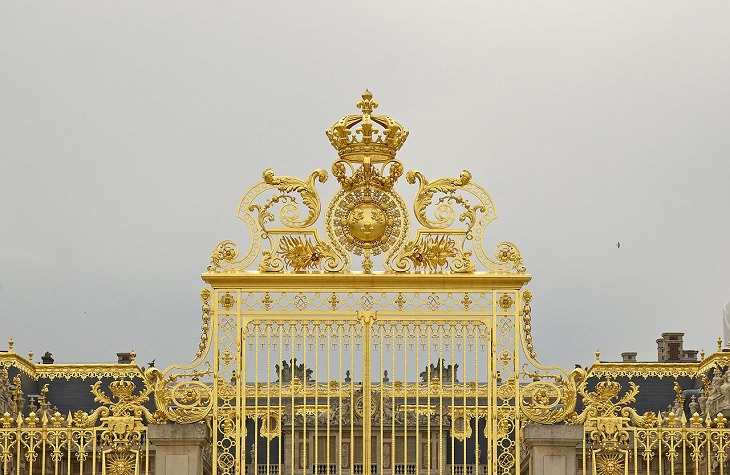
(By Jebulon, Wikimedia Commons)
This gorgeous palace is home to numerous beautiful works of art, many of which were painted on the walls and ceilings, and which have been carefully preserved, as well as an abundance of greenery and stunning fountains.
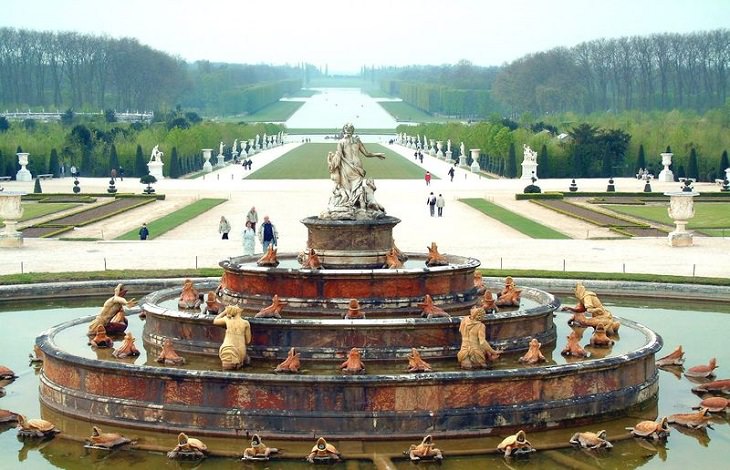
(The Latona Fountain, By Harry, Wikimedia Commons)
A more recent addition, built towards the end of the 19th century, is the Museum, along, of course, with a gift shop and a delicious patisserie with some classic French Macarons that will sweeten up your day. See what I did there?
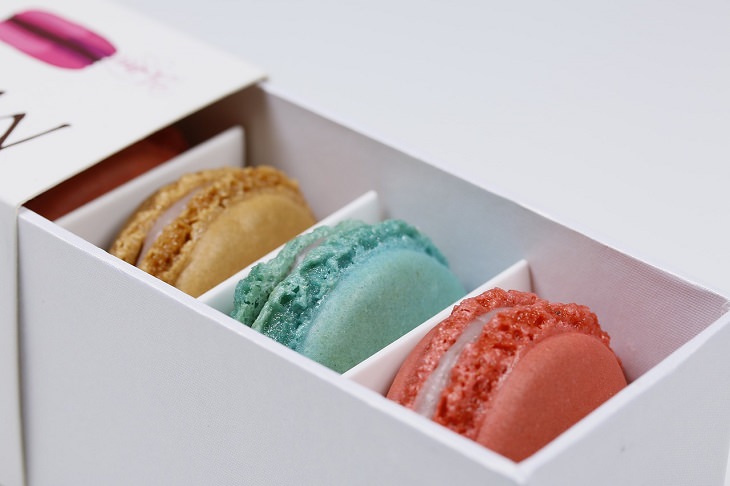
The Palace also has the ever magnificent Royal Chapel and other rooms where the French nobility that roamed its halls would eat, sleep, socialize and for the certain privileged few, drink and hunt, though not in that order I hope.
The Home of Many Kings
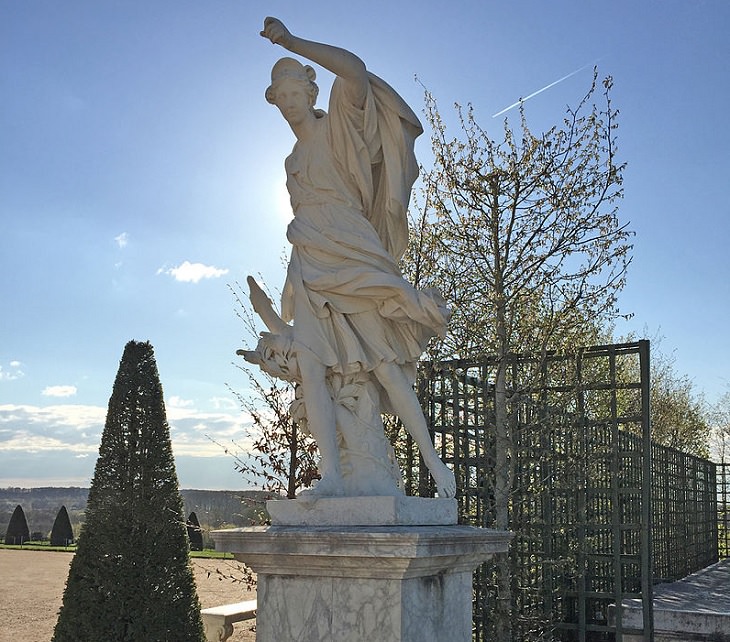
(Statue of Diane, Wikimedia Commons)
The Chateau's illustrious history began in the 1620s, when the first brick, for what would become the monumental Palace of the French Monarchy, was laid.
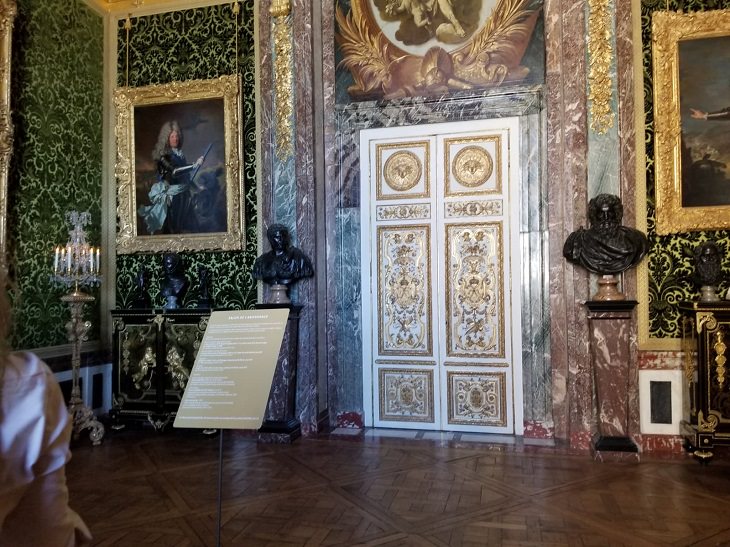
Despite its growth over the years and its current overwhelming size, its construction itself began only with a simple hunting lodge, built on the instruction of King Louis XIII, who fell in love with the surrounding forest after a few hunting trips there as a youth.
However, it was his son, Louis XIV who really contributed to the growth of the palace, beyond the house and hunting lodge built over the years by his father. A majority of the changes were made by Louis XIV.
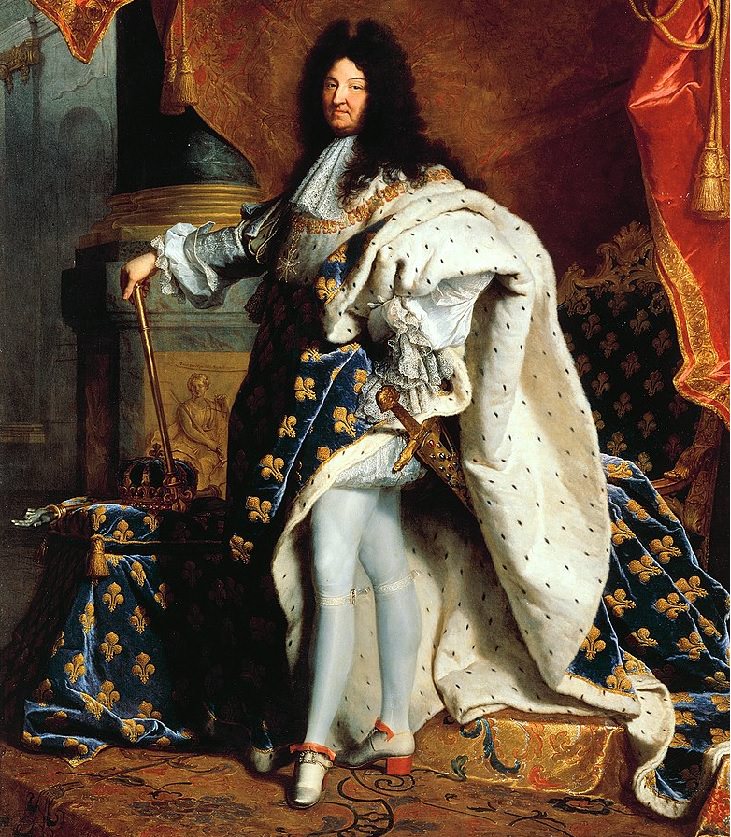
(King Louis XIV, By Hyacinthe Rigaud, Wikimedia Commons)
His fondness for Versailles and the palace built on its grounds was undeniable. Both Louis XV and his son, Louis XVI would come to be born in Versailles. In fact, Louis XVI would later celebrate his marriage to Mary Antoinette in the Royal Opera House in Versailles.
The Court of Versailles
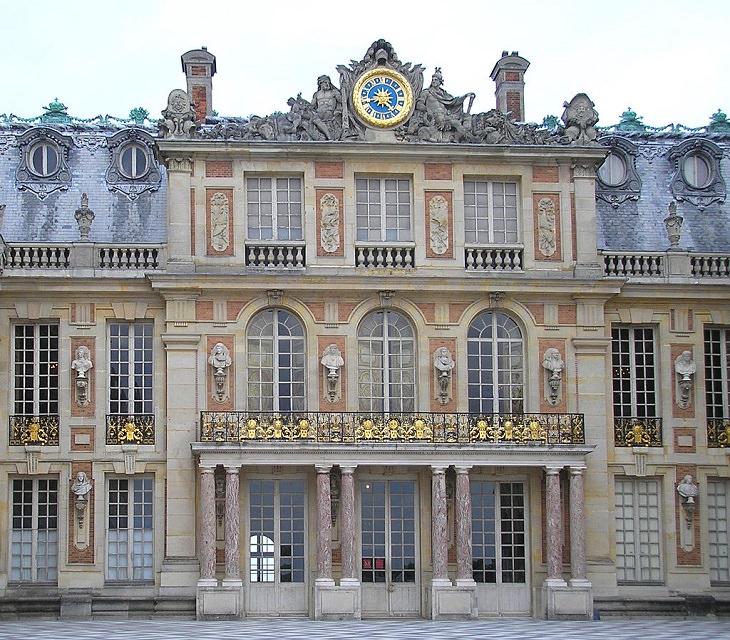
The Court of Versaille, By deror aviderivative work: Joyborg (talk), Wikimedia Commons)
The Court of Versailles is the magnificent structure built directly in front of the gates of the Palace. For a brief period from 1715 to 1722, the Court was up and moved by the King from the Parlement de Paris, back to the Chateau, his home.
King Louis XV had grown bored of the monotony of royal life in the Tuileries and the constant criticism from the public. The return of the court and the king to Versailles was a celebrated occasion, marked by a cheering crowd, lined up throughout Avenue De Paris.
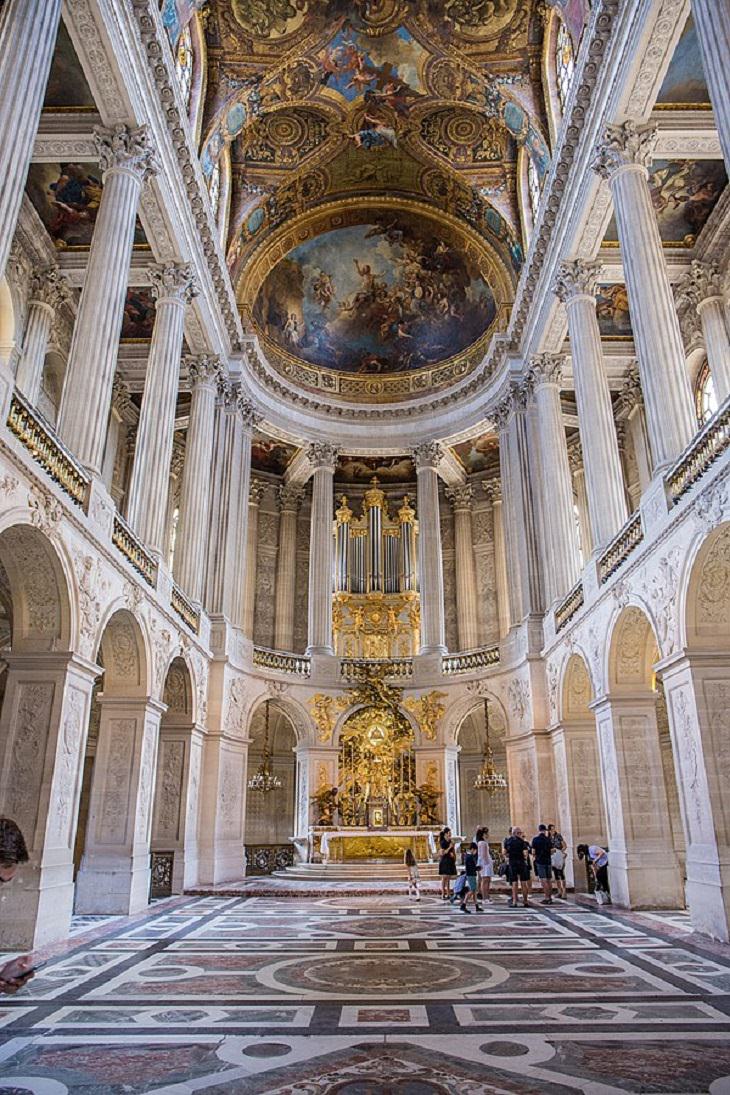
(Royal Chapel, By Nono vlf, Wikimedia Commons)
The King performed his customary visit to the Royal Chapel, after all, there were people watching, before running straight to the gardens followed by a hoard of very worried guards. It was this love for Versailles that made King Louis XV famous for his upgrades to the Royal Chapel and the Hercules Room of the Chateau.
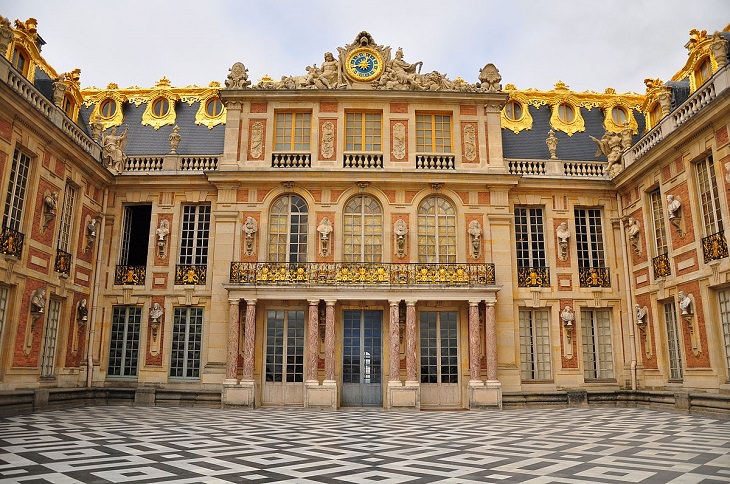
(By Kimberly Vardeman, Wikimedia Commons)
The growth of the Court was a huge contributor to the growth of the town of Versailles itself. On an average day, the Court of Versailles housed up to 10,000 people from all strata of society, from the noblest of the noblemen to the peasants, just there out of curiosity. The court was meant to be a way to allow people to be close to the King.
The Crusades Rooms

(By Charles-Philippe Larivière, 'Château de Versailles Enligne', Wikimedia Commons)
It was finally King Louis-Philippe who engineered the building of one of the most stunning features within the Palace walls in the late 1800s.
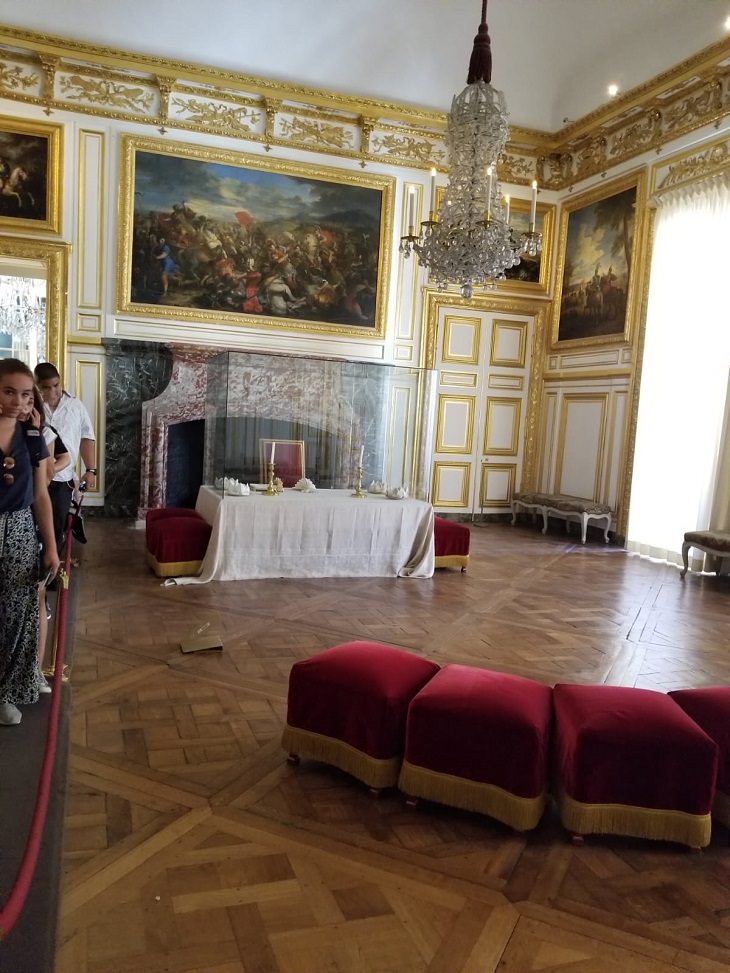
(Kings Dining Room, Chateau De Versailles)
A series of rooms were commissioned and built in the North Wing of the Palace by the then King as a tribute to the Legitimist nobility, one of the many French nobles who could only return to France after the fall of Napoleon Bonaparte.
The paintings adorned on the walls of these rooms bore the coat of arms of the main crusade leaders and depicted the greatest stories of the eight crusades.
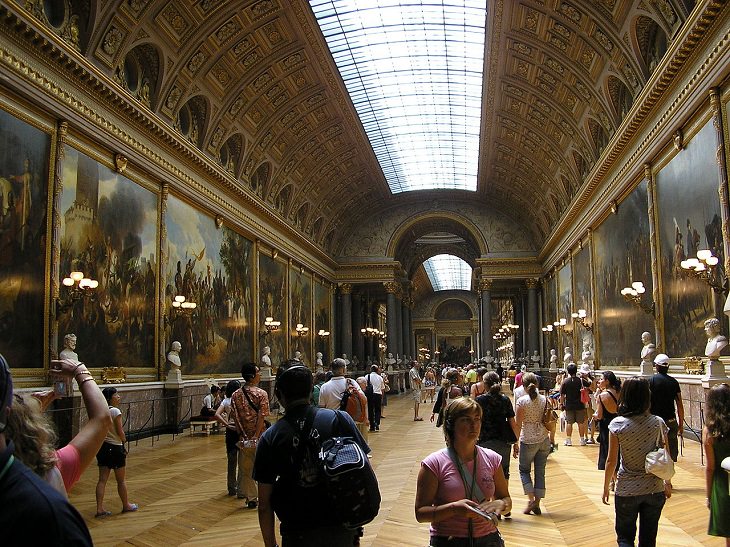
(Gallery of Battles, By Albeins, Wikimedia Commons)
Much of the artwork was moved to the central pavilion of the north wing, an area now called “the Kings Pavilion”. The Crusades Rooms themselves are sometimes used as a concert venue. For those looking to enjoy their music like royalty.
The Royal Rooms
For getting through day-to-day life, the Regent residents of this marvelous palace had an endless number of bedrooms, drawing rooms, ballrooms, and many others. The most famous are:
Salon De Mercure
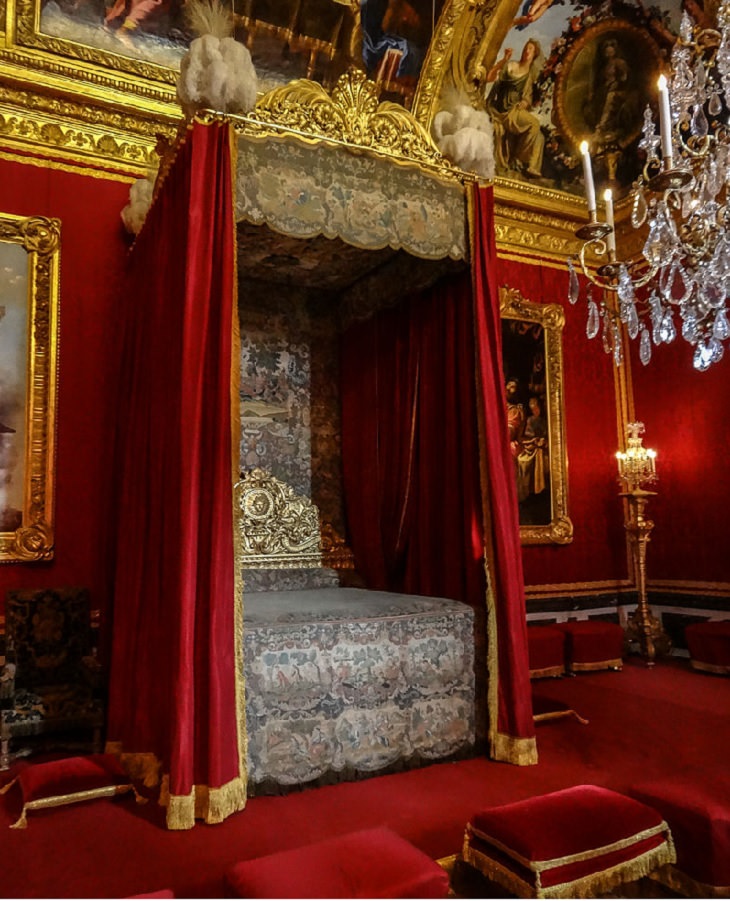
(Salon De Mercure, By Anjelayo, Wikimedia Commons)
Despite it’s inviting appearance, this bed was only ever slept in twice. It was mostly used for presenting the King when he had to make general appearances for the public.
The Queen's Chamber
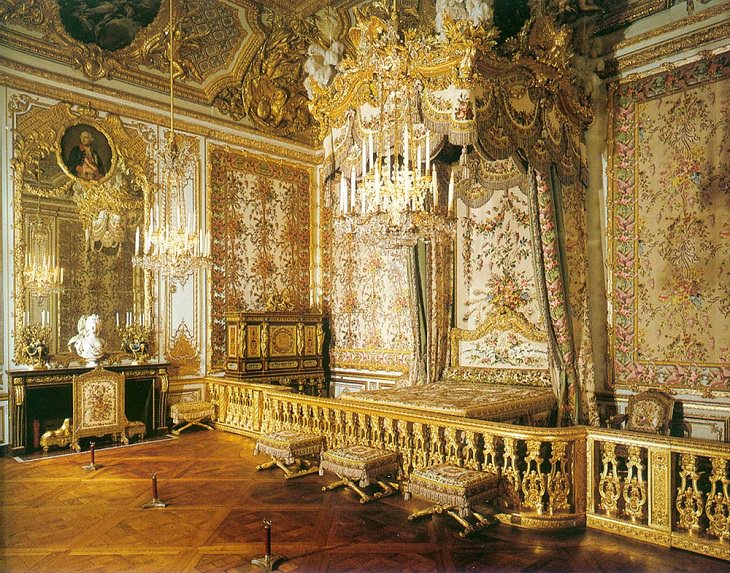
(The Queens Chamber, Wikimedia Commons)
This room was one of many, part of an entire series of private bedrooms for the Queens, together called the Queen’s Apartments. They were made to look very similar to those of the King's.
Chamber du Dauphin/Dauphine
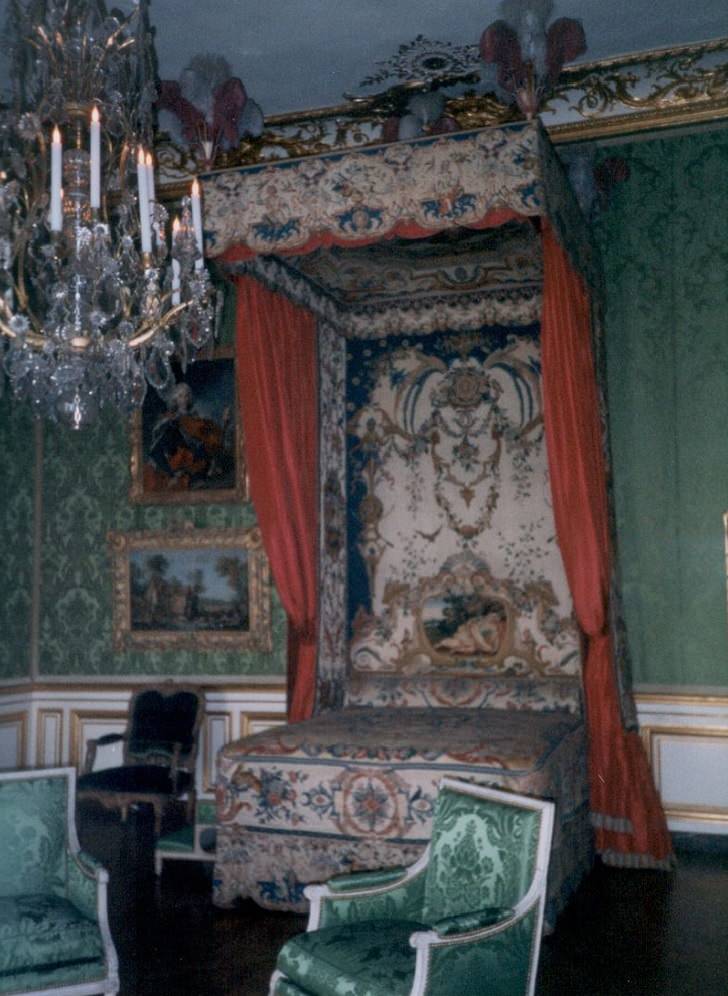
(Chamber du Dauphin, Wikimedia Commons)
The Dauphin and Dauphine were the King’s son and daughter respectively. Much like the Queen, each had their own series of bedrooms. For the young princes, it was named the Dauphin’s Apartments and for the princesses, it was the Dauphine’s Apartments.
Salon De Venus
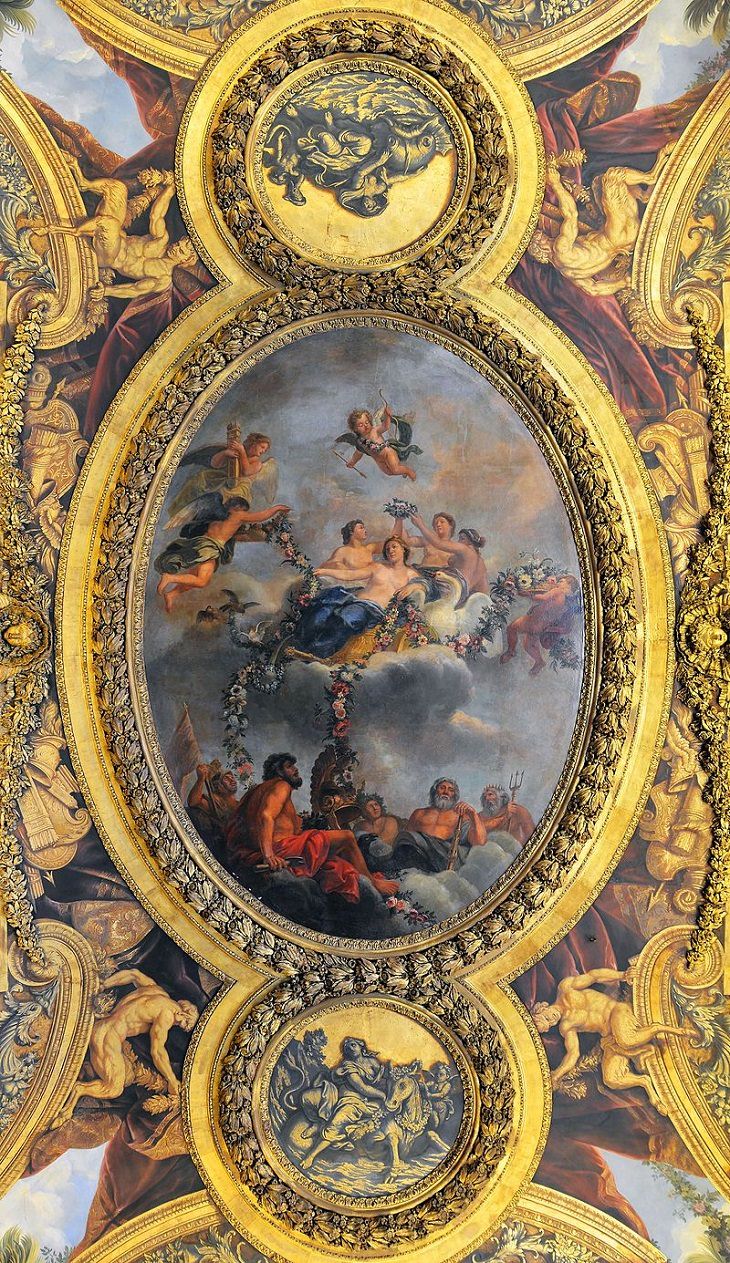
(Ceiling of the Salon De Venus, By Livioandronico2013, Wikimedia Commons)
This drawing room was one of King Louis XIV’s favorite rooms. It was also a presentation room for the King, as it leads to the main entrance of the Grand Apartments.
The Hall of Mirrors
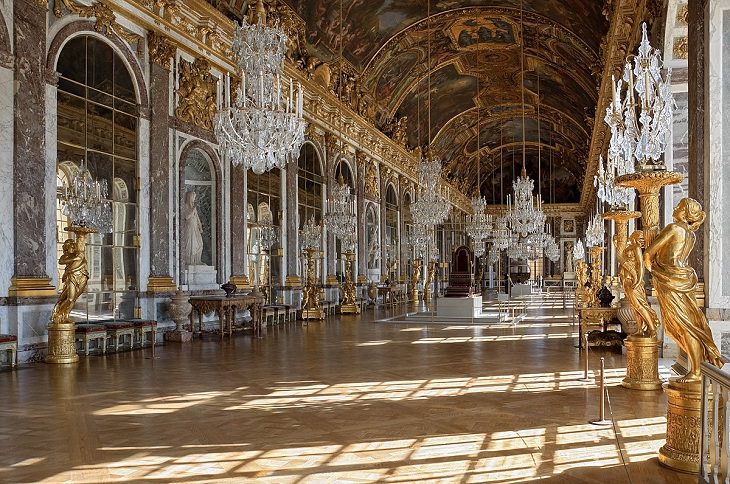
(Hall of Mirrors, By Myrabella, Wikimedia Commons)
The Hall of Mirrors is the highlight of this visit and will continue to be so every time I get a chance to go there. Every square inch of ceiling and wall is covered either with mirrors or stunning artwork depicting moments of historical significance, stories from mythology and words of wisdom.
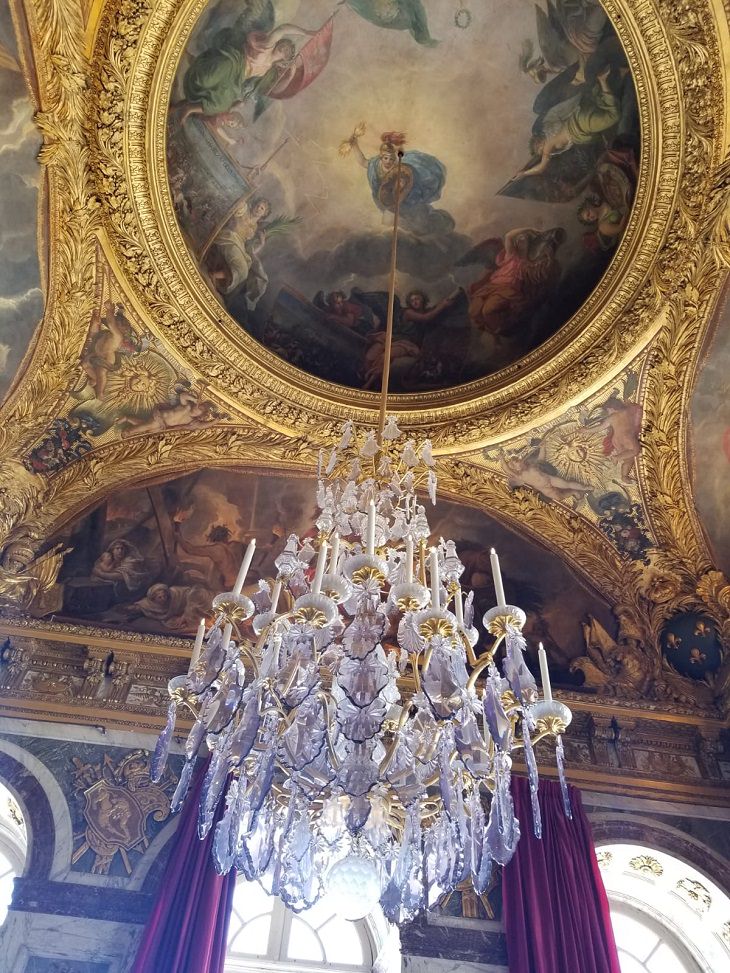
(Ceiling, Hall of Mirrors, Chateau De Versailles)
In the original design for the Palace, a terrace overlooking the garden was first built where the Hall of Mirrors now stands.
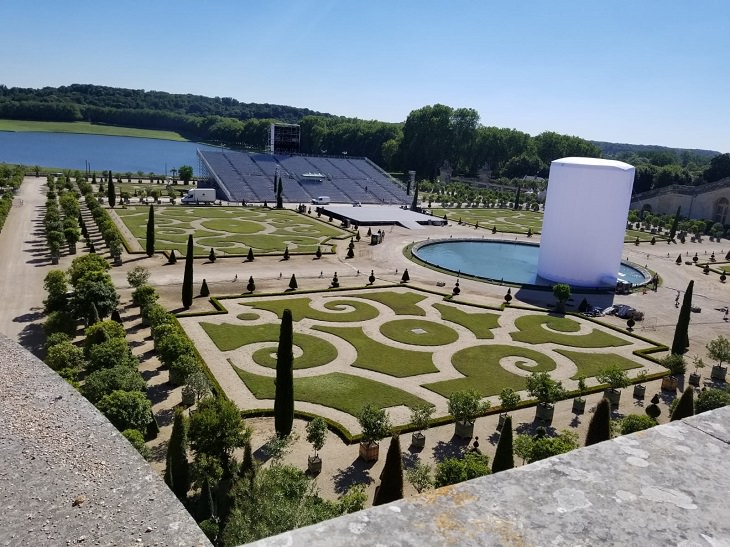
(Extended Garden of the Chateau De Versailles)
Unfortunately, given its openness to bath weather condition and its awkward position between the King and Queen’s rooms, the idea was eventually demolished (along with the actual terrace). It was in the late 1600s that the successor of the original architect of the Palace completed building the Hall of Mirrors, with all its grandeur, flourishes, and silent grace.
The Garden
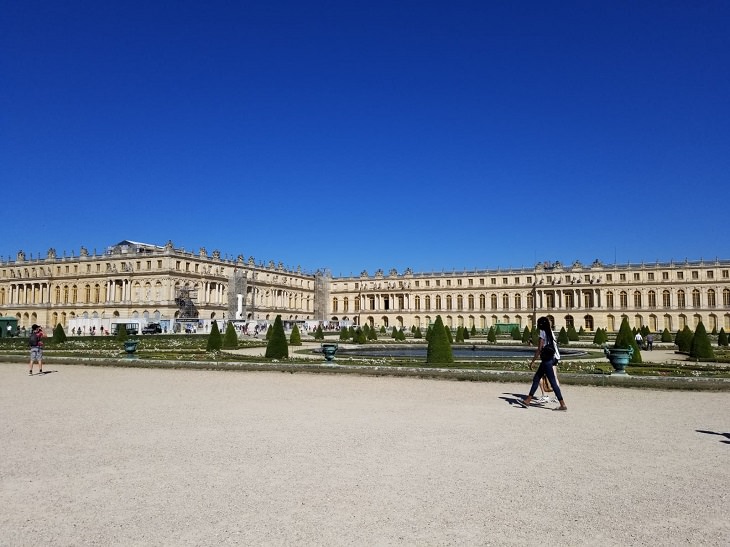
Okay. Rummaging through pictures and I changed my mind. The Gardens have got to be the highlight of the trip.
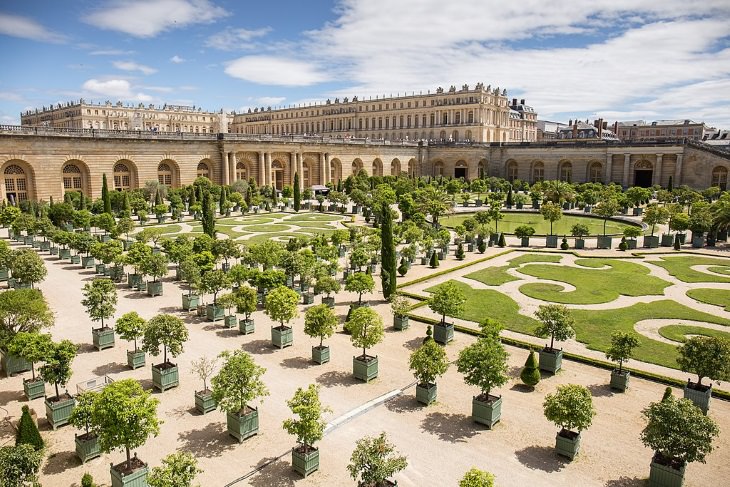
(Garden of Chateau De Versailles, By Nono vlf, Wikimedia Commons)
Looking out from the windows of the Hall of Mirrors, you will get a glimpse of the endless landscape that is the Garden of Versailles.
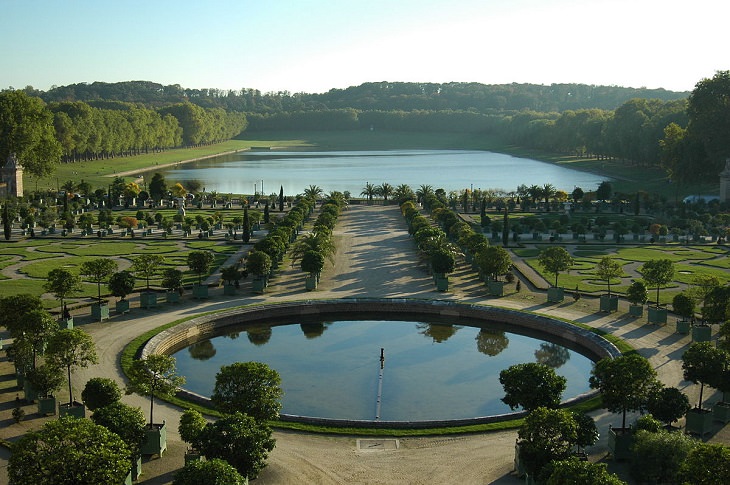
(Orangerie, Garden of Chateau De Versailles, Wikimedia Commons)
A majestic sea of green, embedded with many many beautiful statues and fountains, the Garden has to be one of the most incredible sights you will witness, not to mention a solid work out.
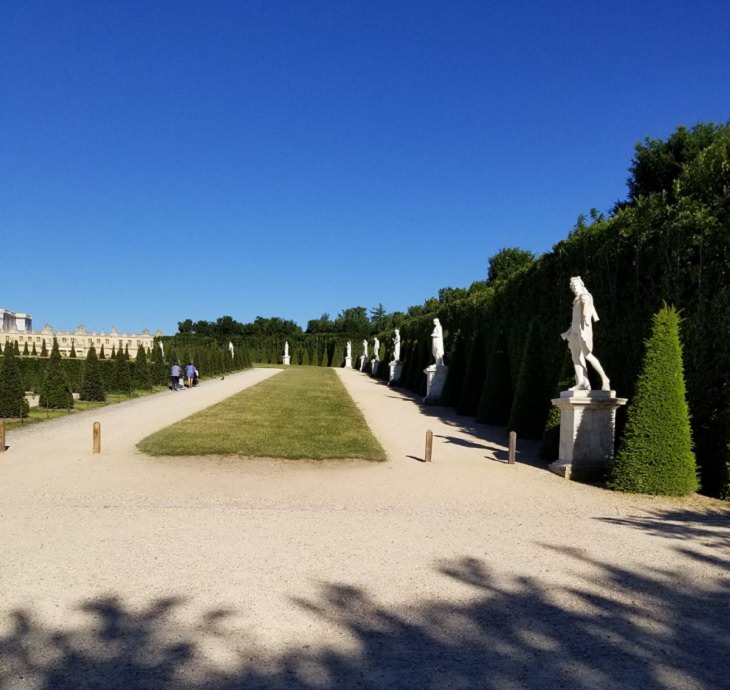
(Walkway of the Garden, Chateau De Versailles)
The Garden itself has a circumference of over 23 hectares with two massive fountains on the grounds (one of which is now a famous destination thanks to its colorful light show), an outdoor theatre, and a maze of carefully maintained shrubbery leading into an untamed forest.

(Fountain Bassin De Flore sculpted by Jean Baptiste, By Coyau, Wikimedia Commons)
At the center of it all is a long and winding body of water, known as the Grand Canal, stretching out over 5.5 km (a little over 3 miles long).
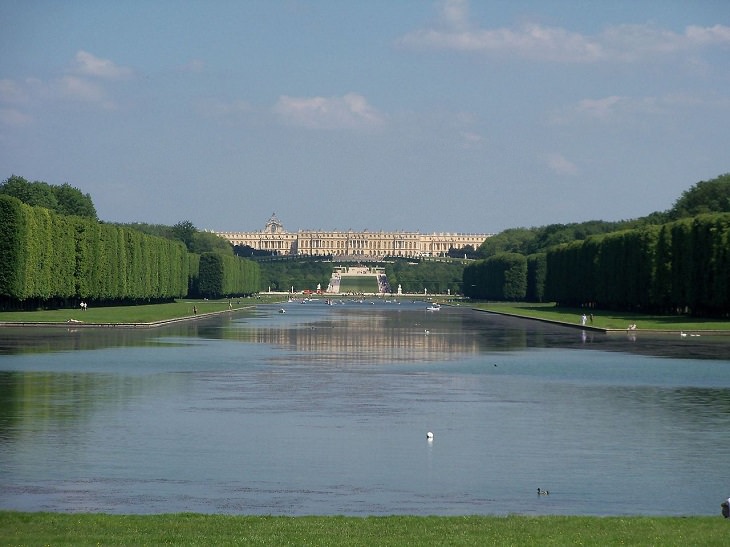
(The Grand Canal, By A very private gentleman, Wikimedia Commons)
The Fountains
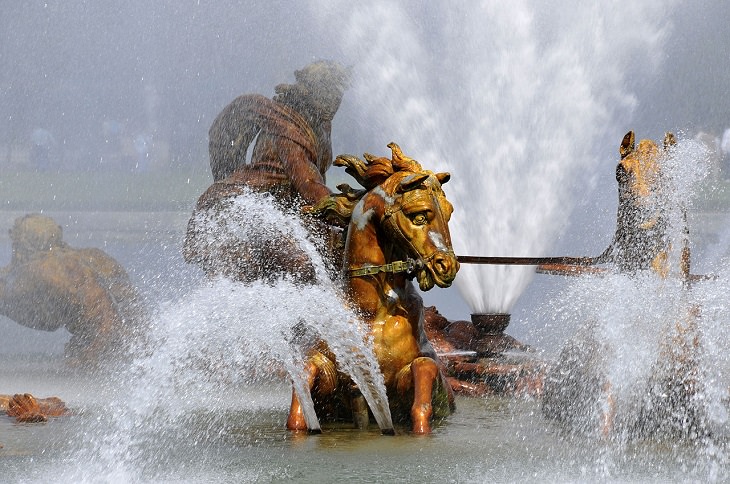
(The Chariot of Apollo, By J. degivry, Wikimedia Commons)
After you’ve seen everything in the Palace and the Grounds that’s there to see, your day is coming to an end. The best way to end a day at the Chateau (or end any day for that matter), is by walking to the Grand Canal on the grounds of the Chateau, heading into the maze of shrubbery and weaving in and out of the trees.

(The Bassin De Latone, By Coyau, Wikimedia Commons)
Past every row of ornately trimmed hedges and in between lines of statues of heroes and heroines throughout time, large fountains depicting incredible stories and moments caught in time, by an artists hand.

(Fountain of Saturn (Neptune), By François Girardon, Wikimedia Commons)
Each fountain leads you to the finale (that and a lot of walking), the coup de grace, the Dragon Fountain.
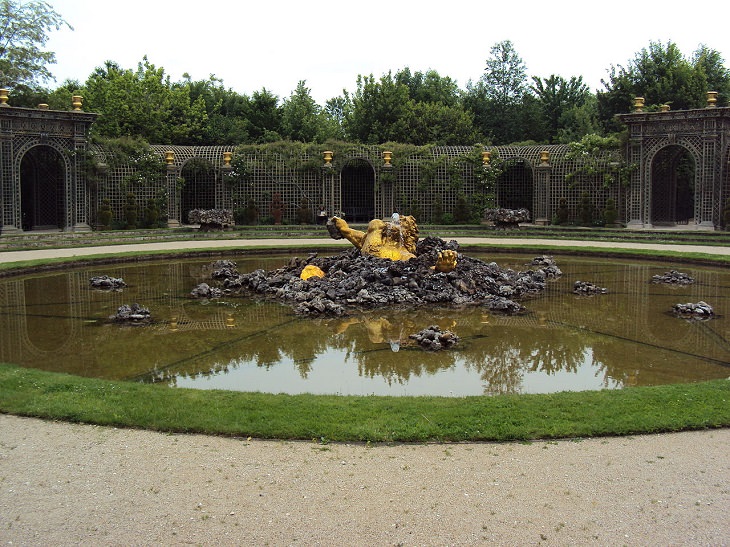
(Fountain de L’encelade, By Gaspard Marsy, Wikimedia Commons)
A Dragon shot down by the young Sun God Apollo, throws its head back, surrounded on either side by dolphins. The highest jet of water reaches an astounding 88 feet in the air, with the other jets hovering just below. Just imagine the view: synchronized jets of water, coupled with beautiful music, and a setting sun.
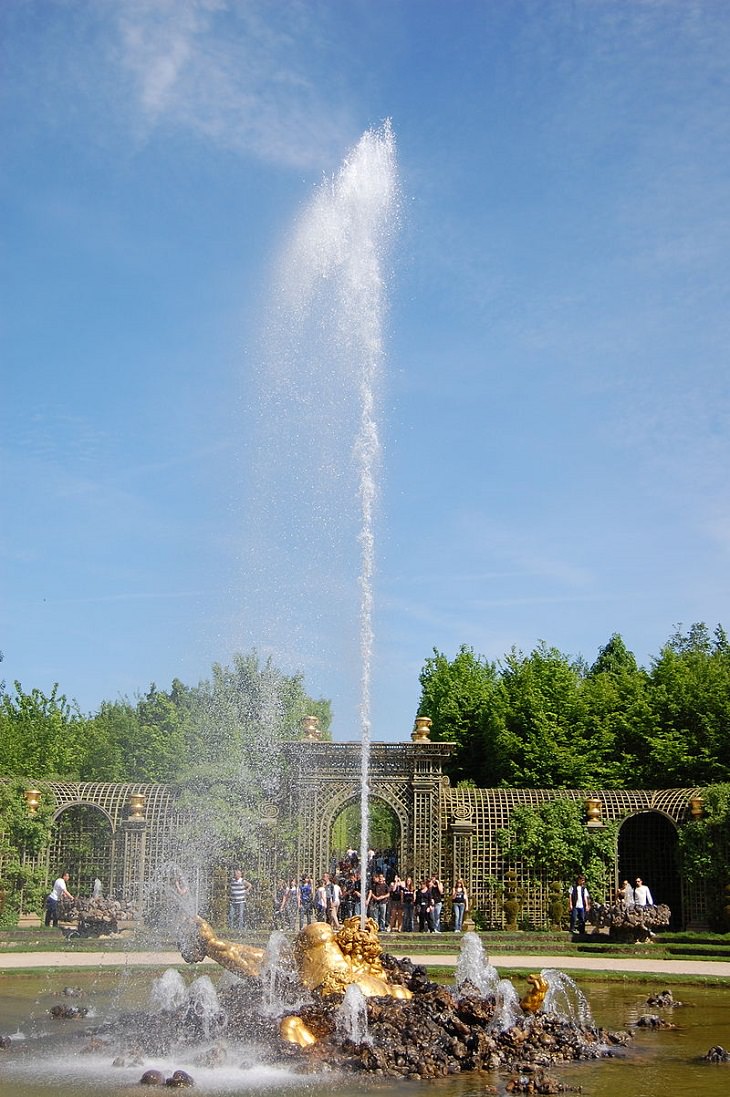
(Fountain in the Parc de Versailles, By edwin.11, Wikimedia Commons)
Whoever thought a trip to some palace on the outskirts of Paris could give you such bliss.
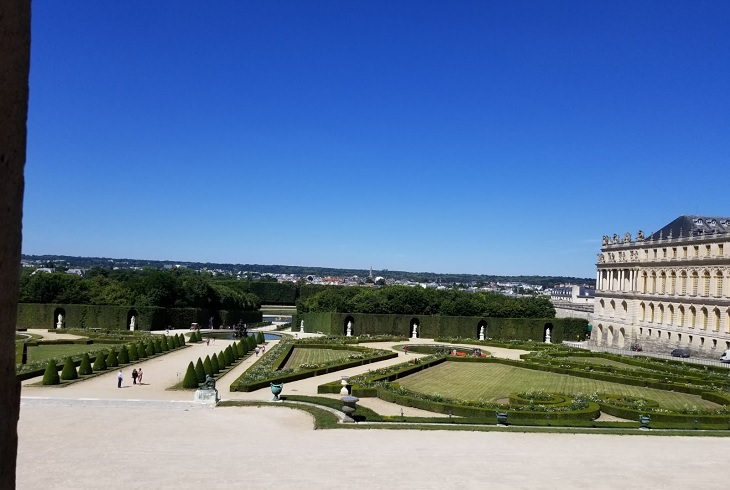
Kind of explains the 1-hour line to get in!